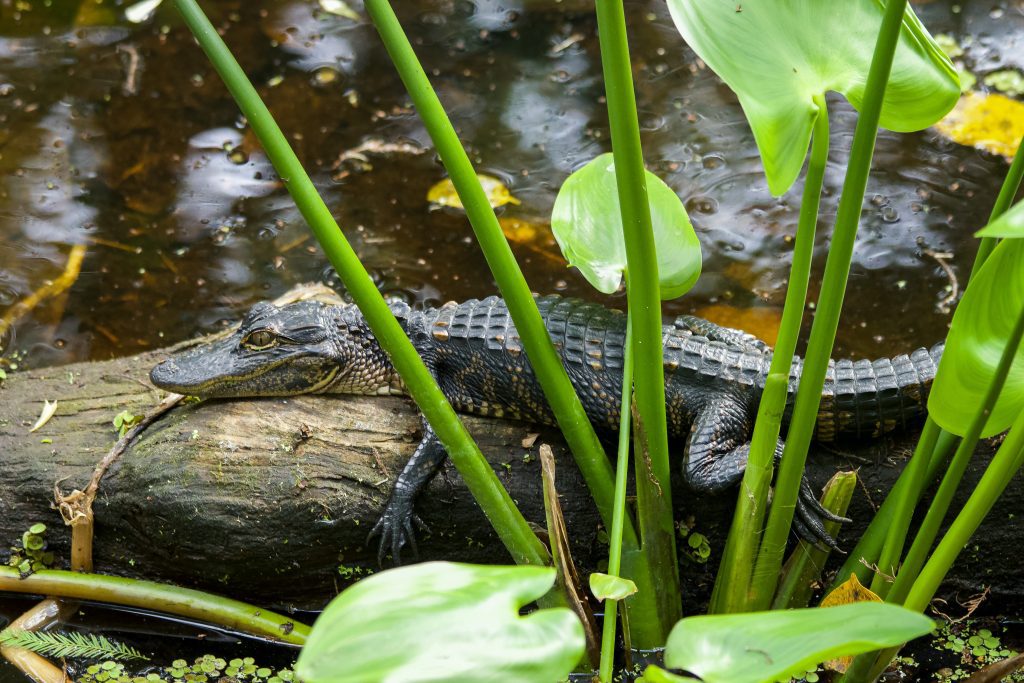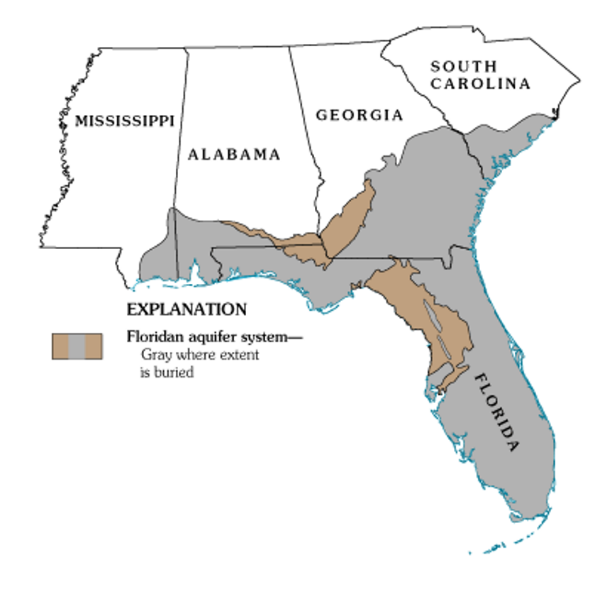“There is an unbreakable link between human health and wellbeing and ecosystems” – Walter Reid
You can define, navigate, and best understand Florida by learning about the water underneathe and throughout its landscape. This article will dive into the self-sustaining, natural filtration systems that keep our aquatic ecosystems beautiful and biodiverse. These processes are always working to recycle the water and maintain the delicate balance between freshwater, saltwater, and pollutants. Most of the credit goes to the hydrologic cycle, the state’s unique underground composition, and native fauna. Unfortunately, human activity and an increase in water demands have put these processes in jeopardy.
Is filtered water also clean water?
When it comes to water quality, nature has its own standards. The Florida Department of Environmental Protection has created metrics to better understand the condition of the water bodies around us from an ecosystem perspective. Most of us have preconceived notions of what kind of clarity, color, or plant life clean water should have. However, the following parameters are the most accurate way of determining the health of our local waterways:
- Chemical properties measure various nutrients, nitrogen, and phosphorus levels.
- Physical properties measure dissolved oxygen, temperature, and turbidity levels.
- Biological properties survey algae concentrations, bacteria counts, and plant communities. (1)
Water that is clean enough for an estuary or swamp would not meet contemporary sanitation standards for sprinkler systems or tap water. Ultimately, what allows native life to flourish and what is best for human health are completely different. And, while waterways support a variety of human functions, this article focuses on how nature filters our pollutants, metals, and other materials to support life in nature’s ecosystems.

Photo credit: Unsplash
How is water filtered throughout Florida?
In the Everglades and Rivers
It’s no secret that the diversity of animals and fauna plays an essential role in water quality. Countless interactions weave the complicated web of a healthy ecology. For instance, let’s consider rivers. Bottom feeders, such as nematodes, are constantly working to break down plant matter, while snails and other shell-builders process calcium. Trees and aquatic plants also work together to filter pollution and sediments. (2)
The water in the Everglades acts much like that in a river, except its branches are much wider and slower-paced. Water flowing in predictable north-to-south fashion from Orlando to the southernmost edge at the tip of the state would take approximately a year to get there. During this time, the water is filtered by a “river of grass” that inhabits these branches. Then, it either joins the everglades or becomes a source of the state’s tap water.
For these waterbodies, living organisms, soil, and other organic matter purifies the water through chemical absorption and consuming excess nutrients. However, human activities have hindered these processes and caused accelerated movement of unfiltered water through these ecosystems, which ends up back into our water supply. (3) This will become an increasingly large-scale issue as long as we compact, degrade, or alter the composition of bagged and bulk soil in surrounding areas for agriculture and urban development. Deforestation is a huge underlying contributor to this issue, which is discussed in our article, the Florida Deforestation Crisis.
In the Wetlands (Marshes, Swamps, and Bogs)
Florida has the most diverse collection of swamp habitats on the globe. Collectively, they provide flood control, aquifer recharge, and coastal protection. They also act as “kidneys” that filter pollutants from reaching the rest of the state’s aquatic ecosystems. (4)

Photo credit: Unsplash
If you have ever visited any of these water bodies, you may have seen a variety of crustaceans. These shellfish – especially oysters – are actually an important part of keeping estuaries healthy. They constantly feed on and filter out nutrients and chemical contaminants that would otherwise harm other populations.
In Springs and Aquifers
The Florida springs make up the world’s most extensive and productive system of its kind. Individual springs are created when groundwater is forced to discharge because of pressure from impermeable layers surrounding the aquifers below. These underground reservoirs make up the Florida aquifer system, which supplies all of Florida’s natural water system in some way. They also comprise nearly 100% of the state’s drinking water and 60% of its freshwater usage for agriculture and industry. (7)

In the image to the left, areas in grey show parts of the Florida Aquifer that are below the surface, while the brown portions are where it emerges, often in the form of springs. The entire system stretches about 100,000 square miles and stores groundwater in five states.
The underground sections are mostly made up of limestone, which has high porosity and permeability. That means water and other liquids can move freely between a large number of pores because of how interconnected they are. (8)
Photo credit: USGS Publication HA 730-G
The Florida aquifer recharges through a process called percolation. This occurs when water seeps through the ground and down into the spaces within the structure of the limestone, thus creating a sponge-like saturation that replenishes the springs. (9) The areas where confined aquifers are separated from the surface by a protective layer, mostly composed of clay, tend to be less contaminated during the recharge process.
Even if all the water stayed clean, what keeps it drinkable freshwater is another of nature’s wonders. The aquifer actually does contain both freshwater and saltwater, but because of the difference in density, the saltwater sinks deeper into the aquifer below the freshwater. If these freshwater levels in aquifers are above sea level, the pressure keeps saltwater from moving upward into the usable water supply. (10) However, studies are showing a constant rise in our sea level, which you can read more about in our article: Sea Level Rise in Florida.
How can we enable the natural filtration of water in Florida?
If drastic changes are not made regarding how our water is sourced and managed, there will be major shortages and destruction to aquatic ecosystems across the state. As individuals, there are several ways to ensure that future trends prevent these disasters:
- Plant native plants, especially in wetland and stormwater pond areas. As a general rule, choose plants with “vertical” growth patterns instead of those with “creeping” or “trailing” growth. (11)
- Remove any debris, even if it’s from natural foliage. This kind of accidental contamination sinks to the bottom, and the decay contributes to unhealthy algae growth.
- Reduce or remove any use of fertilizers, such as Roundup. The resulting nitrate and phosphate loads in surrounding waterways cause algal blooms, the death of fish populations, and the eventual growth of invasive plant species. In worst-case scenarios, these fertilizers create “dead zones” altogether. (12)
- Be responsible for your pet’s waste. It is an environmental pollutant that contains parasites and bacteria that are harmful to aquatic life. It can also leach into groundwater, local canals, and our state’s aquifers. (13)
- Landscape intentionally, which means avoiding common turf grasses when possible. Small-rooted plants do not grow deep into the soil, are prone to many diseases, and can be easily undercut by erosion. (14) Also consider trimming and mowing on days with a minimal breeze; this allows you to redirect the clippings away from nearby water sources. For more tips and tricks on this, check out our article: Water Pollution – Caused by Yard-Care?
Sources:
- https://plants.ifas.ufl.edu/manage/overview-of-florida-waters/water-quality/
- https://plants.ifas.ufl.edu/manage/overview-of-florida-waters/waterbody-types/rivers/
- https://www.freedrinkingwater.com/water_quality/quality2/j-8-08-natural-purification-of-liquid-water-work-page2.htm
- https://plants.ifas.ufl.edu/manage/overview-of-florida-waters/waterbody-types/
- https://www.freedrinkingwater.com/water_quality/quality2/j-8-08-natural-purification-of-liquid-water-work-page2.htm
- https://www.freedrinkingwater.com/water_quality/quality2/j-8-08-natural-purification-of-liquid-water-work-page2.htm
- https://plants.ifas.ufl.edu/manage/overview-of-florida-waters/waterbody-types/
- https://floridadep.gov/fgs/geologic-topics/content/aquifer-essentials
- https://floridaspringsinstitute.org/springs-101/
- https://nwdistrict.ifas.ufl.edu/nat/2020/04/09/the-incredible-floridan-aquifer/
- https://www.clemson.edu/extension/water/stormwater-ponds/problem-solving/aquatic-weeds/shoreline-emergent-plants/index.html)
- https://wec.ifas.ufl.edu/extension/gc/harmony/landscaping/nativeandexotic.htm
- https://www.broward.org/NatureScape/Documents/lote_for_web.pdf
- https://www.clemson.edu/extension/water/stormwater-ponds/problem-solving/aquatic-weeds/shoreline-emergent-plants/index.html








